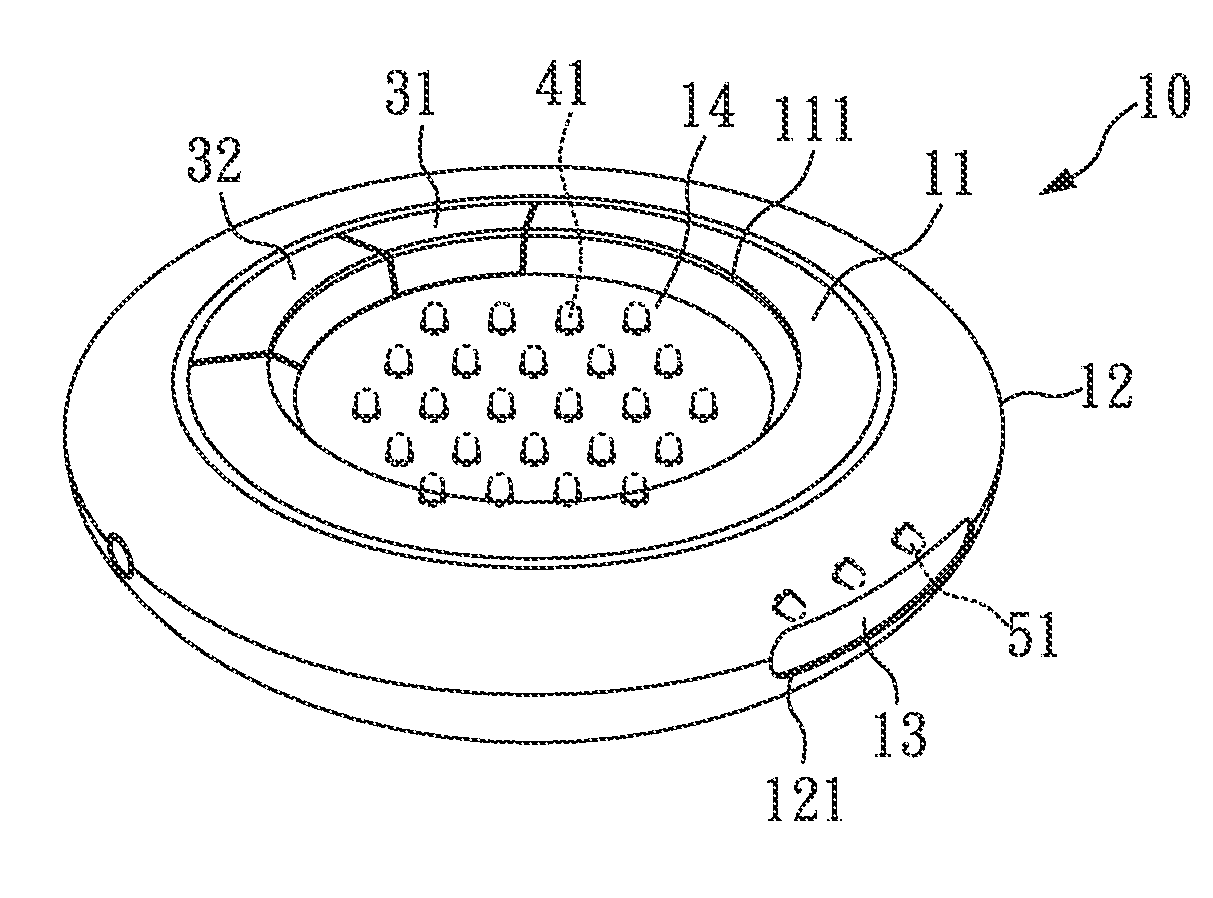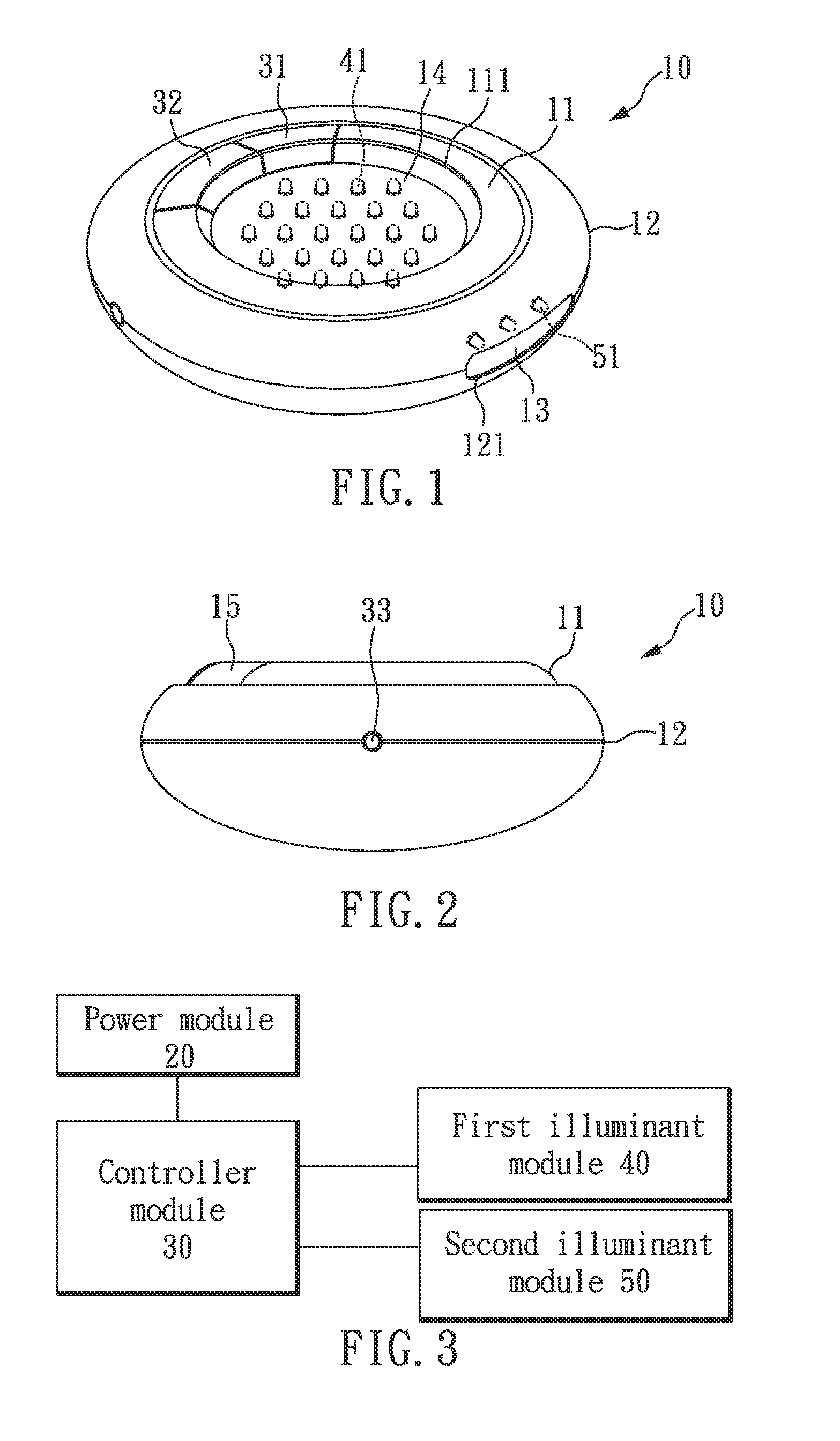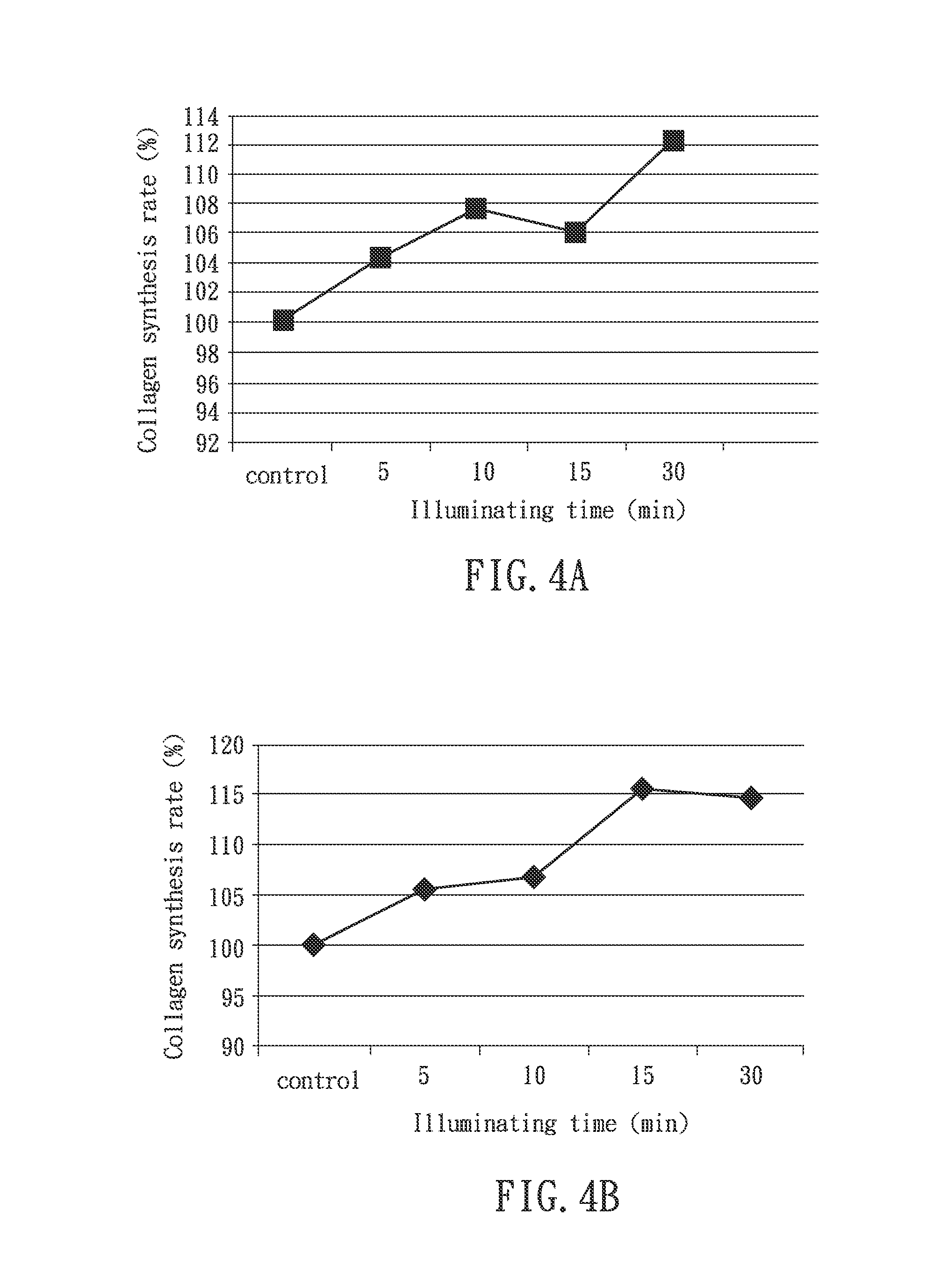Photo-stimulation method and kit with agonist agent
a technology of agonist agent and kit, which is applied in the field of photo stimulation method and kit, can solve the problems that the agonist agent cannot function efficiently, and achieve the effects of reducing or inhibiting melanin synthesis, promoting collagen synthesis, and increasing collagen synthesis
- Summary
- Abstract
- Description
- Claims
- Application Information
AI Technical Summary
Benefits of technology
Problems solved by technology
Method used
Image
Examples
example 1
The Photo-Stimulation Device]
[0041]With reference to FIGS. 1 to 3, FIGS. 1 to 3 respectively show a perspective view, a side view, and a system block diagram of a photo-stimulation device of the present invention.
[0042]As shown in FIGS. 1 to 3, the photo-stimulation device of the present invention includes: a casing 10, a diffuser plate 14, a light-transmission plate 13, a first illuminant module 40, a second illuminant module 50, and a controller module 30.
[0043]The casing 10 forms a deposition space for receiving different modules. In addition, the casing 10 has a top surface 11 and a lateral surface 12. The top surface 11 is provided with a light-output window 111. The lateral surface 12 is provided with a light-output hole 121.
[0044]The light-output window 111 of the top surface 11 is covered by the diffuser plate 14, and the light-output hole 121 of the lateral surface 12 is covered by the light-transmission plate 13. The second illuminant module 50 corresponds to the light-tra...
experiment 1
[Collagen Synthesis Rate with the Agonist Reagent and Red LED (Lux 8,480)]
[0050]First, human fibroblasts (2×104 cells / well) were seeded with DMEM in a 48-well plate and cultured for 24 hours in an incubator at 37° C. and 5% CO2. Each well of the 48-well plate contained the cells and DMEM in a total volume of 0.5 ml.
[0051]Subsequently, all the culture media were removed, and then 500 μl PBS, which contained 0.25% agonist reagent, was added into each well. The cells were illuminated by the red LED (8,480 lux) for 5, 10, 15, and 30 minutes respectively. Then, total PBS in the well was removed and 500 μl DMEM, which contained 0.25% agonist reagent, was added into each well. The cells were incubated for another 24 hours.
[0052]Then, the procedure described in the previous paragraph is repeated. The cells were illuminated by the red LED again and cultured for 24 hours in an incubator.
[0053]The culture medium in each well was taken out and collected into tubes. 500 μl PBS was added to wash ...
experiment 2
[Collagen Synthesis Rate with the Agonist Reagent and Yellow LED (Lux 2,290)]
[0057]The experimental method, procedure, and conditions were the same as described in Experiment 1, except cells were illuminated with the yellow LED (Lux 2,290) to replace the red LED (8,480 lux). The results are shown in FIG. 4B.
[0058]As shown in FIG. 4B, the collagen synthesis rate when illuminated with the yellow LED at 2,290 lux for 15 minutes is 115%. This result indicates the agonist reagent is able to promote collagen synthesis of fibroblasts.
PUM
 Login to View More
Login to View More Abstract
Description
Claims
Application Information
 Login to View More
Login to View More - R&D
- Intellectual Property
- Life Sciences
- Materials
- Tech Scout
- Unparalleled Data Quality
- Higher Quality Content
- 60% Fewer Hallucinations
Browse by: Latest US Patents, China's latest patents, Technical Efficacy Thesaurus, Application Domain, Technology Topic, Popular Technical Reports.
© 2025 PatSnap. All rights reserved.Legal|Privacy policy|Modern Slavery Act Transparency Statement|Sitemap|About US| Contact US: help@patsnap.com



